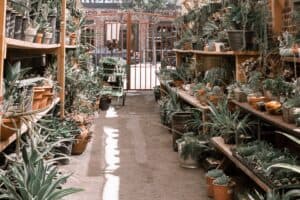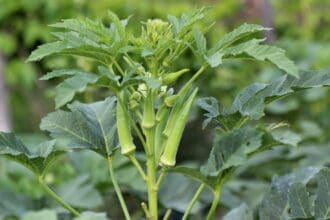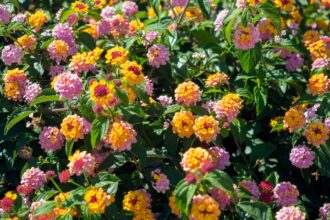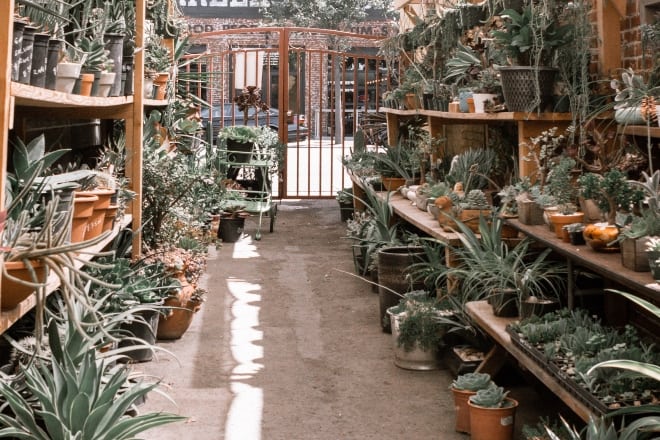
via: Unsplash / Adrienne Leonard
With many types of aloe available, it's no wonder why these succulents are seen everywhere. And it's not just because they make for homely decorations. Aloes are plants with purpose!
I love growing aloe, and I know everything from the different types of aloe, how to plant and take care of them, and their many uses.
Learning about types of house plants should start with aloe.
So let's dig right in!
Contents
Best Types of Aloe You Can Grow Indoors
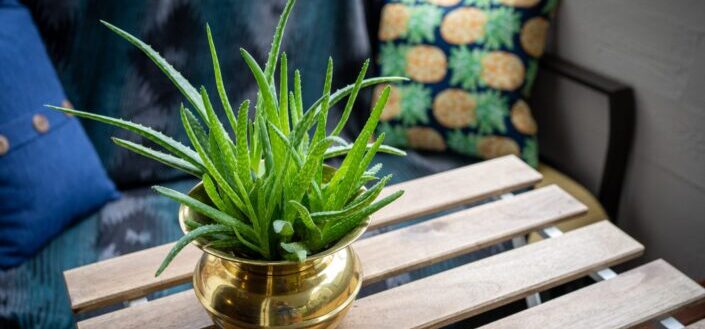
via: Unsplash / Alexandra Tran
They're amazingly tough but beautiful, and with the many types of aloe, it can be hard to choose which is best for you. Is it the aloe dichotoma or the candelabra aloe? Perhaps the climbing aloe? Don't worry; we'll help you choose from the best of these indoor aloes.
1. Aloe aristata
Common name: Lace Aloe
Why you should get one for your home: Aristata are evergreen and do well indoors near a window, and will prosper at room temperature. As a slow-growing plant, it doesn't grow too wide or too tall. In early summers, it grows orange flowers that turn a shade of red. The lace aloe plant looks great on a shelf or small table, or even the kitchen windowsill.
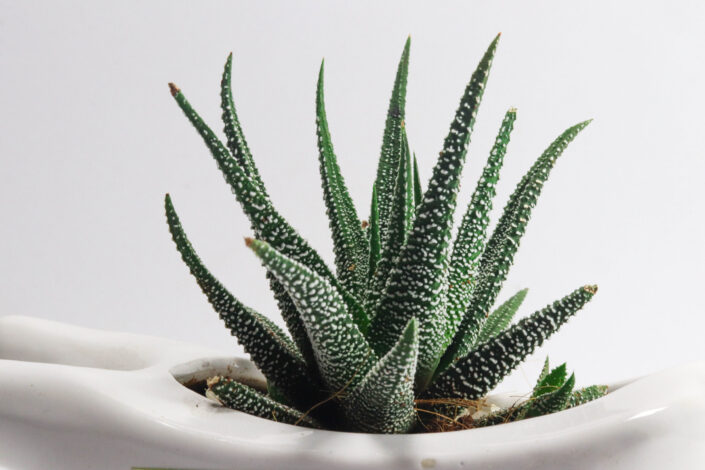
via: Pexels / Himesh Mehta
2. Aloe brevifolia
Common name: Crocodile Plant or Short-Leaved Aloe
Why you should get one for your home: Delicate spikes run along the edges of each leaf making them look like a crocodile's jaw hence its name Crocodile Plant. Small and compact, this has an ornamental feel perfect for indoor decor. Looks good on its own, or it can be set with other accessories for a touch of green.
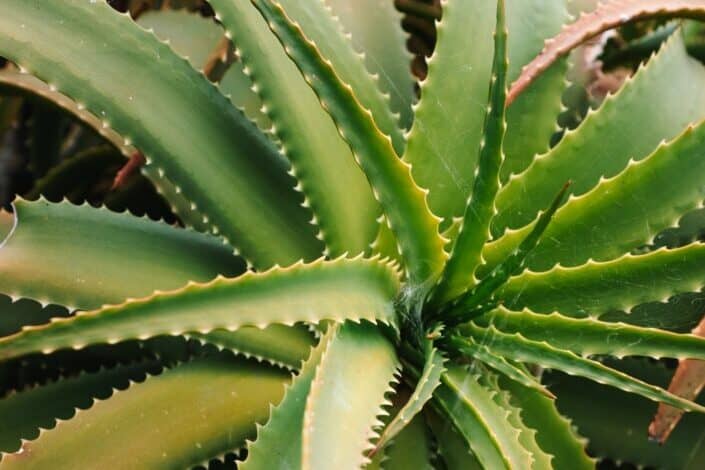
via: Unsplash / Andrea Leopardi
3. Aloe variegata
Common name: Tiger Aloe
Why you should get one for your home: Aloe variegata is a unique work of art! Its aloe leaf is striking dark green with white stippling stripes, giving it a tiger-stripe look. You may need to place them on a window sill to receive a decent amount of sunshine and deserved admiration from the outside world.
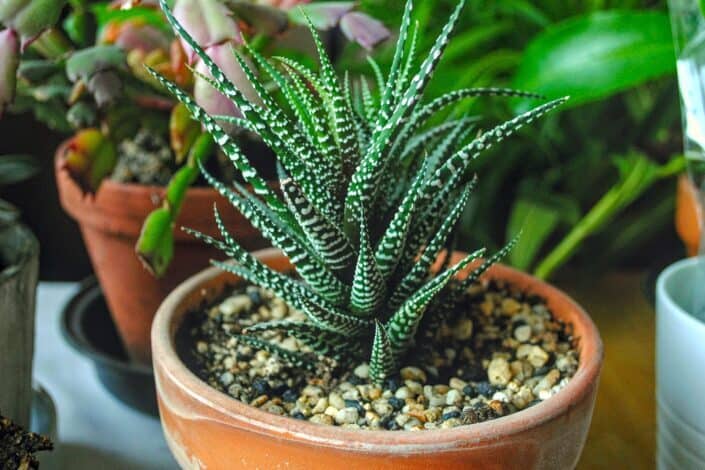
via: Unsplash / Samuel Perez
4. Aloe perfoliata
Common name: Rubble Aloe or Mitre Aloe
Why you should get one for your home: A hardy species with elongated rosettes, perfoliata's green leaves turn red when deprived of water. Its distinct leaf shape and striking textures make it a trendy decorative addition to any home. It's suitable for small or medium-sized pots.
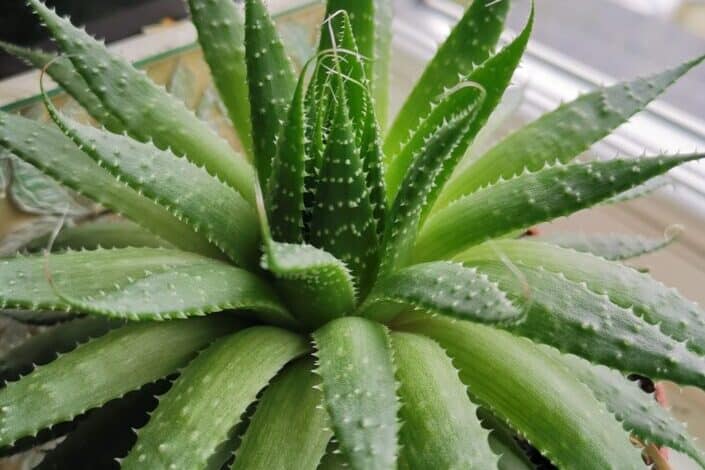
via: Unsplash / Jude Smart
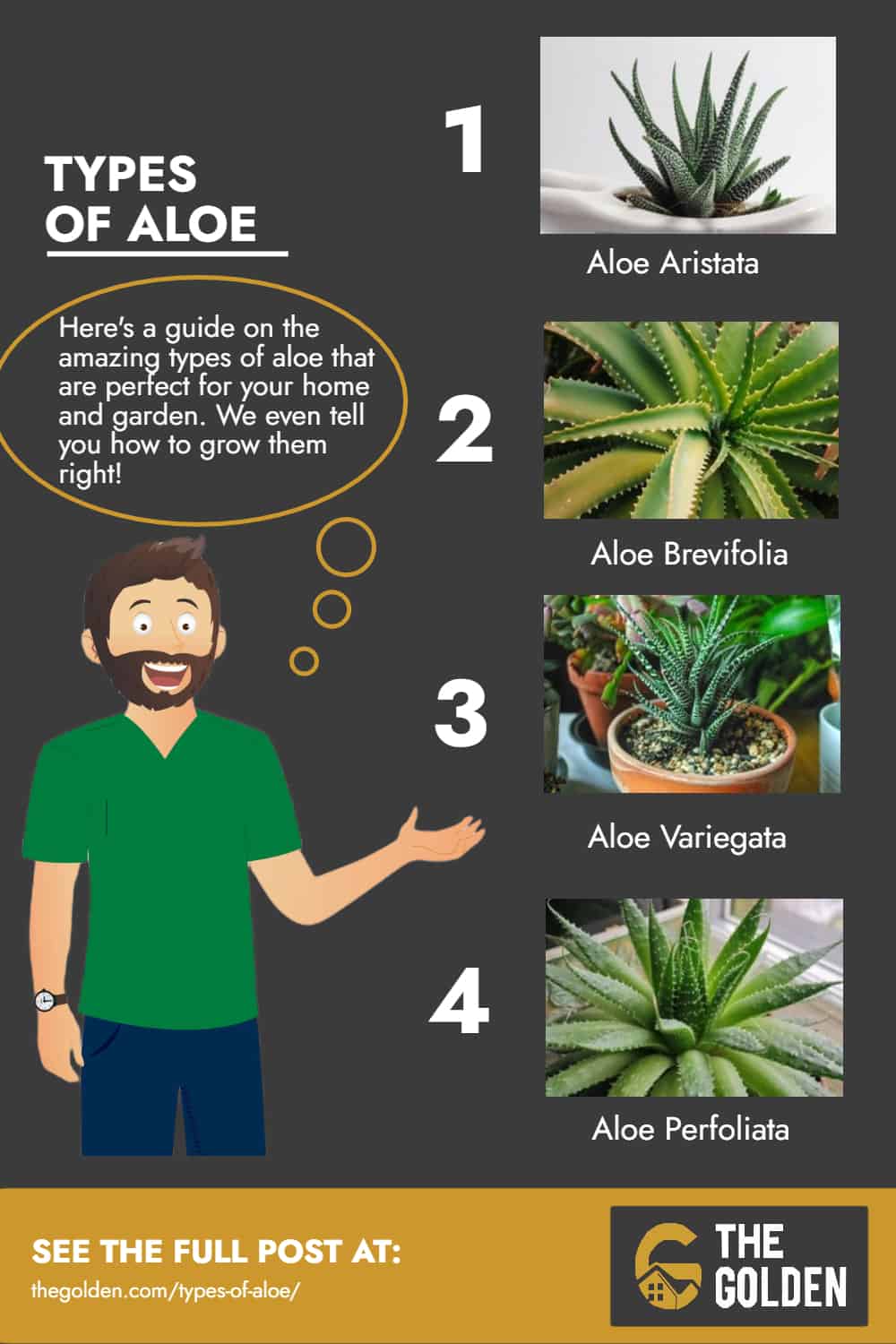
via: The Golden
Share This Image On Your Site
Varieties of Aloe For Your Home Gardening
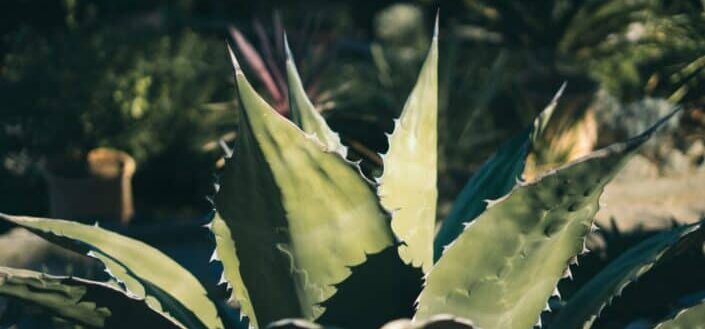
via: Unsplash / Valentin B. Kremer
Appreciated for their preference for neglect over constant attention, it is not surprising why these seasoned plants are perfect for home gardening. Most aloe plants, like bitter aloe, aloe bakeri, and aloe maculata, for example, thrive regardless of whether you keep them inside or outside. Their diversity of endless color variations and shapes make them the perfect choice for any garden.
5. Aloe juvenna
Common name: Tiger Tooth Aloe
Why it's a good addition to your garden: The leaf is spiked on this aloe known as the "teeth", making the rosette look like a tiger's jaw. Aloe juvenna is tough and adapts easily to new environments. It will happily grow inside or outside. An excellent choice for a striking look. Once they get growing, they produce a good amount of pups and offshoots.
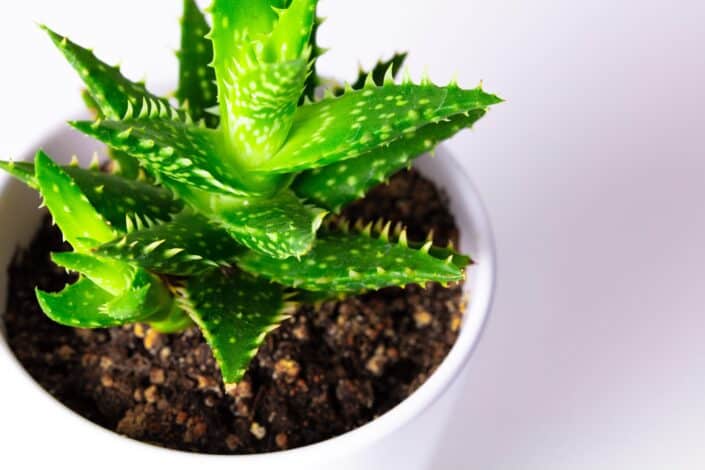
via: Unsplash / Matthew Ball
6. Aloe cameronii
Common name: Red Aloe
Why it's a good addition to your garden: For a colorful focal point, cameronii develops some rich red tones when water is withheld. It can provide impressive color contrast in your garden as it changes from lush green to copper-red. It's an evergreen succulent plant with graceful curving leaves. This probably has the most attractive foliage out of the aloe genus.
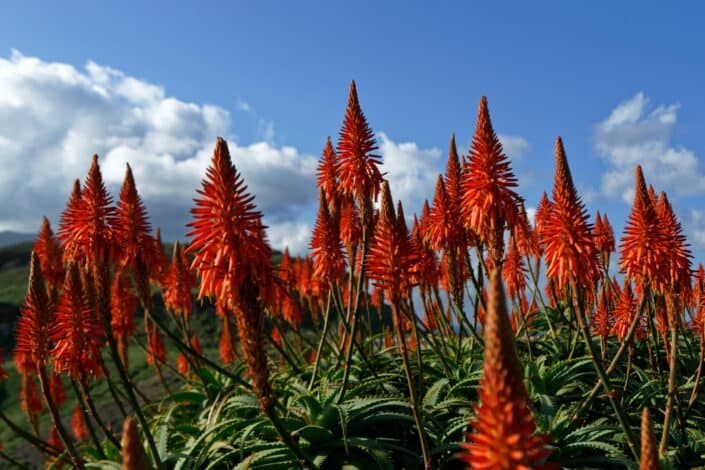
via: Unsplash / Colin Watts
7. Aloe marlothii
Common name: Mountain Aloe
Why it's a good addition to your garden: A large, single-stemmed aloe with a large, robust head of stiff, grey-green leaves, this plant can stand up to 10 feet tall. It grows tubular flowers in orange-red to yellow, which produces nectar that can attract nectar-feeding birds and bees. This will add a dynamic presence to any garden, ideal for beds and borders.
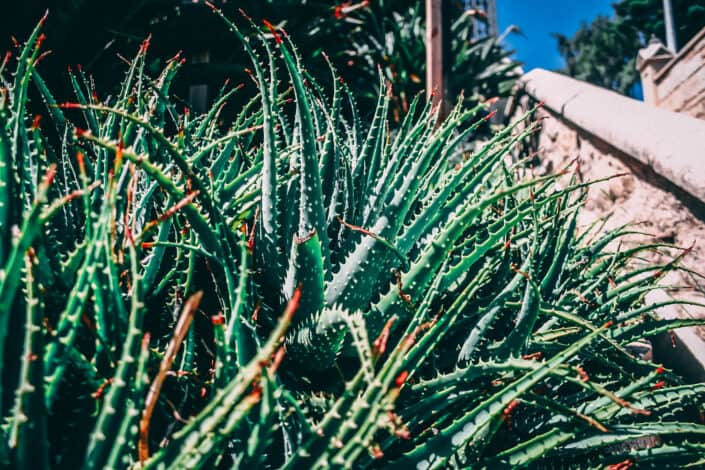
via: Pexels / Darcy Lawrey
8. Aloe vaombe
Common name: Malagasy Tree Aloe
Why it's a good addition to your garden: A showy, large and tall aloe, this tree-like succulent has dark rich green leaves that turn a deep red in winter. It grows fiery red flowers, ideal as an accent for decorative gardens. Plant in broad sun and water sparingly once established. Regular watering will help it grow quicker and more luscious though.
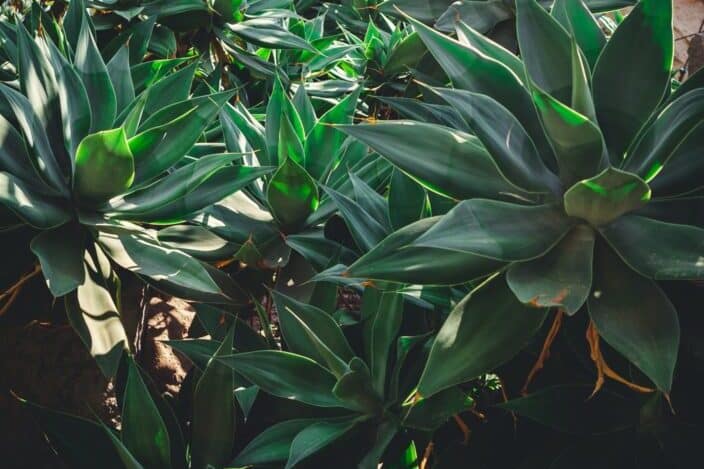
via: Unsplash / Andreas Dress
Aloe Species Perfect for Landscaping
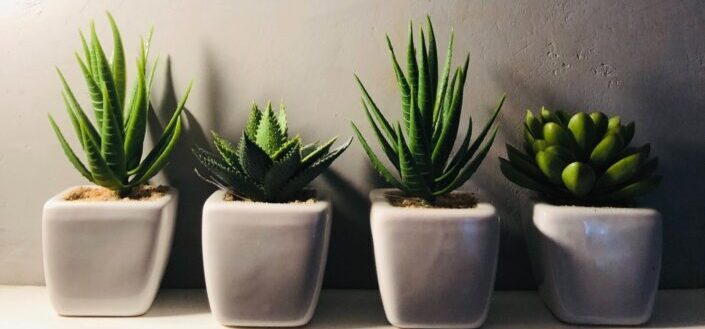
via: Unsplash / Francesco Perego
The drive to find ways to lower costs and landscaping maintenance has made outdoor succulents a trend for their minimum care needs and their ability to withstand infrequent watering. Like the aloe socotrina and stone aloe, aloes make excellent centerpieces and are ideal for landscaping projects. Whether it's color, texture, or design you're looking for, there is a species of aloe that will provide the character you're looking for.
9. Aloe polyphylla
Common name: Spiral aloe
Why it's perfect for landscaping: Attractive and rare, the spiral aloe is unique as its leaves grow in a way that creates a circular pattern forming a spiral. Green with white to light-green spines on leaf edges, they're great outdoor succulents to add a dramatic and mesmerizing flair. This can sprout salmon-pink flowers in spring or summer when mature. For more information on how to grow spiral aloe, check it out here.
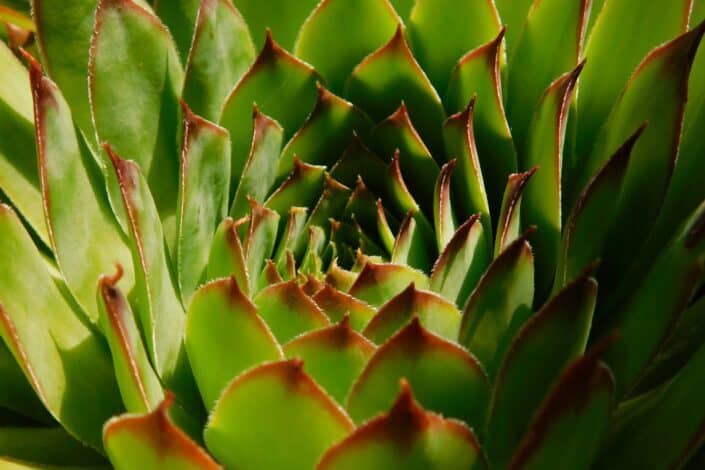
via: Unsplash / Viviana Couto Sayalero
10. Aloe rooikappie
Common name: Little Red Riding Hood Aloe or Little Gem
Why it's perfect for landscaping: Rooikappie grows densely-clustered wide rosettes of medium green and produces tall branched, flat-topped inflorescences of flowers. The name 'rooikappie' translates in Afrikaans as "little red cap" owed to the color of its blossoms. Suitable for xeriscaping, the rooikappie is very attractive!
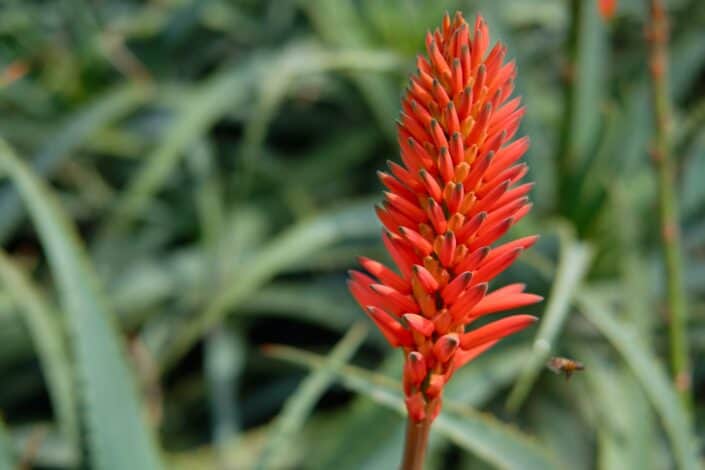
via: Unsplash / Roy P.
11. Aloe striata
Common name: Coral Aloe
Why it's perfect for landscaping: These evergreen succulents are probably the more frost-hardy of aloes. They grow 2 feet wide with rosettes of flat and broad, pale gray-green leaves, and then in late winter and into early spring, they can grow up to three 2 foot tall stems that hold clusters of coral-red flowers. They make an impressive focal point to flower beds, and because their flowers are full of nectar, they also attract birds, bees, and butterflies.
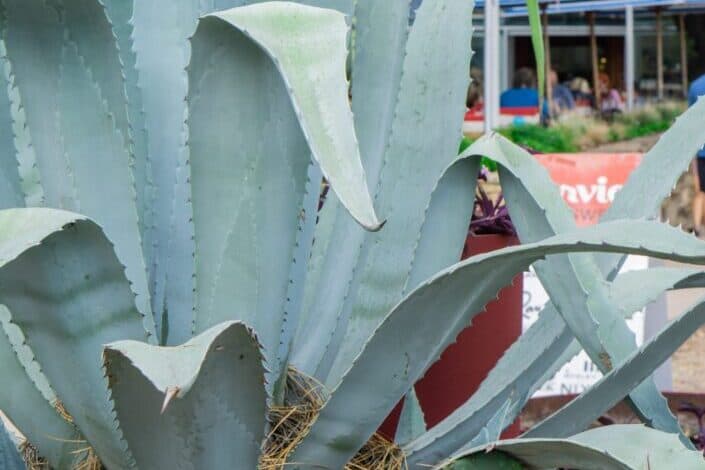
via: Unsplash / Cassandra Dunn
12. Aloe viridiflora
Common name: Green-Flowered Aloe
Why it's perfect for landscaping: Stemless succulents that form dense rosettes of blue-green leaves covered with powdery blooms, their leaf edge is lined with reddish-brown teeth. They're a lovely addition to your landscape for their striking flowers that grow as tall stalks colored green to lemon-yellow.
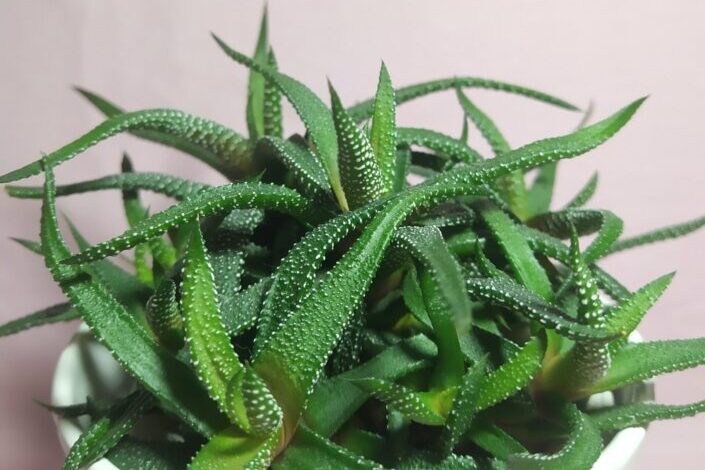
via: Unsplash / Kate
Types of Aloe That Are Poisonous

via: Unsplash / Nataliya Melnychuk
Aloe has a widely known reputation as a succulent plant that heals, and the aloe vera leaf has been used in traditional medicine for thousands of years. With aloe vera gel and aloe vera juice sold at most supermarkets, aloe is known for its various health benefits and uses. But did you know that there are poisonous, non-edible aloes? While most of these poisonous varieties are pretty rare, the misunderstanding that all aloe is safe for consumption has had some severe consequences.
13. Aloe ballyi
Common name: Rat Aloe
Why it's poisonous: Ballyi is a rare aloe plant that forms slender stems, topped with a crown of long leaves. Their leaf sap contains anthraquinones that can be used as a laxative. However, prolonged consumption of this plant can cause congestion, irritation in the pelvic region, and colorectal cancer.
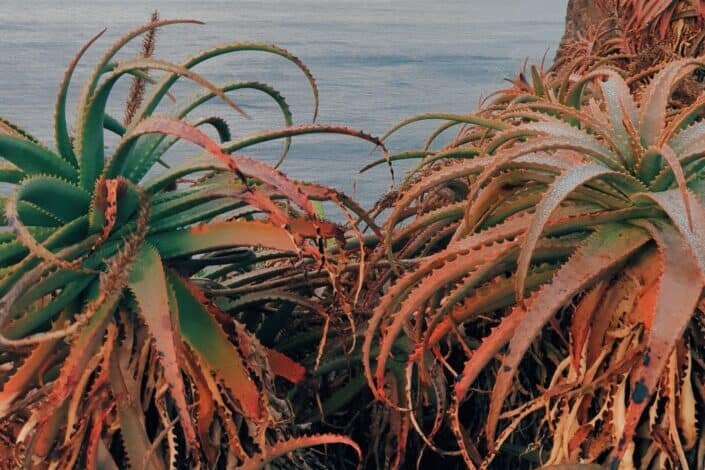
via: Unsplash / Reiseuhu
14. Aloe elata
Common name: Aloe or Osuguroi
Why it's poisonous: A tall East African tree aloe, usually unbranched, elata gives off a smell reminiscent of rats or mice when broken. Inflorescences are multi-branched with bicolored flowers that are red in bud and turn yellow when they open. Elatas contain alkaloids in their aloe latex that has toxic properties. Alkaloids are known to have a diverse effect on humans, but on this specific species, it is poison.
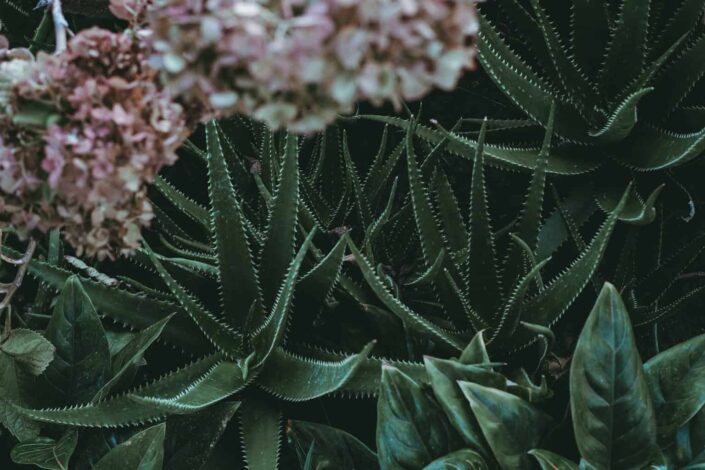
via: Unsplash / Rainier Ridao
15. Aloe ruspoliana
Common name:
Why it's poisonous: Aloe ruspoliana has been known to be used for poisoning hyena in Kenya and Somalia by smearing its leaf extract over meat.
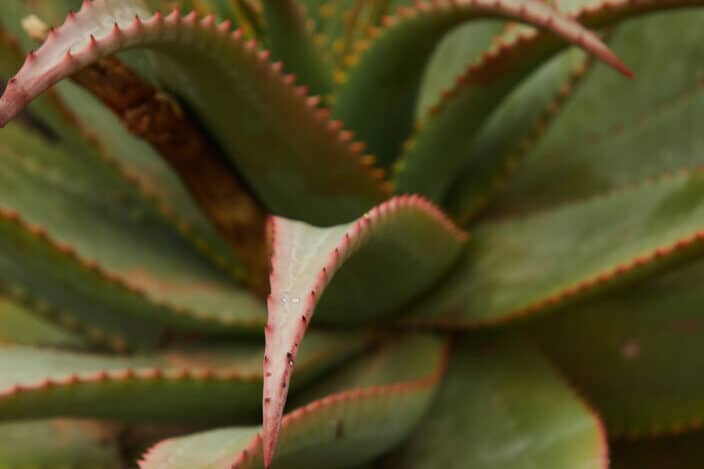
via: Pexels / Laker
16. Aloe barbadensis
Common name: Aloe Vera or Aloe Vera Barbadensis
Why it's poisonous: Yes! Even this plant has potential poisonous properties! Either by ingestion or when applied topically, side effects can occur. While the aloe gel is considered safe for small-dose consumption, aloe vera can cause abdominal pain and diarrhea if taken frequently for too long. Aloe latex on the other hand, if used long-term in large amounts, might cause serious side effects, including kidney and heart problems. Taking aloe latex, even just 1 gram daily, can be fatal.
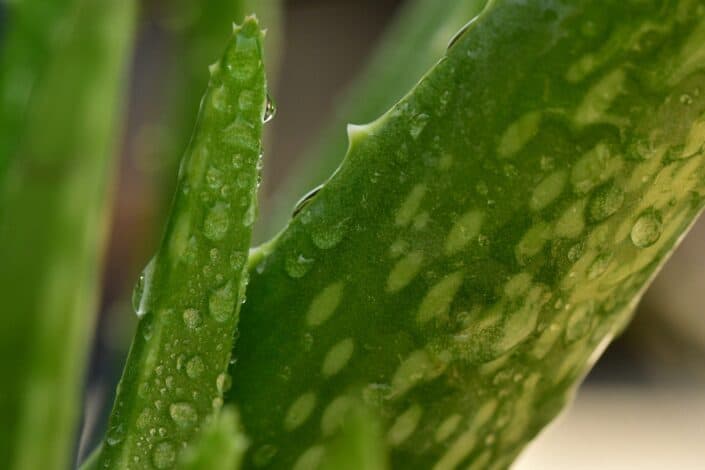
via: Unsplash / pisauikan
Is Aloe A Succulent?
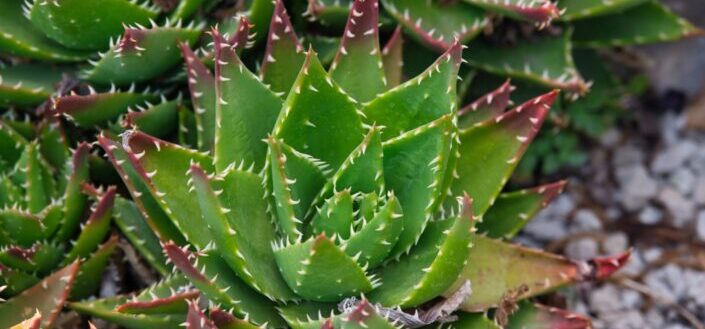
via: Unsplash / Gabor Koszegi
In botany, all succulents have thick and engorged leaves to retain water, but aloe is distinguished apart from other types of succulents by its triangle-shaped fleshy leaves.
They have an annual market value worth billions globally as aloe is used on a large scale by the cosmetic, pharmaceutical, and food industries. They are also often used as home remedies for burns, minor cuts, and skin and hair care. With the varieties of aloe available, they have become a common choice for any level gardener.
This is how to plant succulents, and when you see how easy it can be, you'll understand why it's a household favorite.
How Many Species Of Aloe Are There?
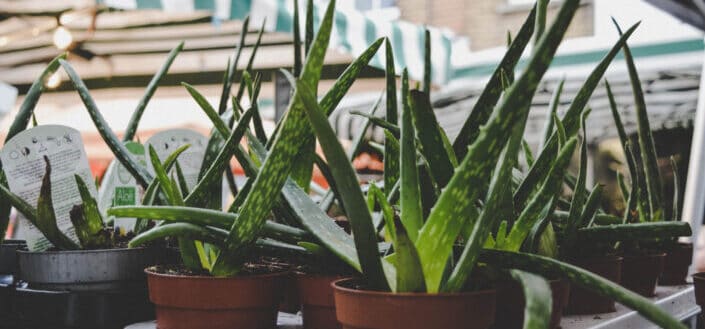
via: Pexels / Cintia Siqueira
There are over 400 species of aloe, and you have your choice of color, type, style, and size. While there is a diversity in the aloe variety, the most widely known is Aloe Vera, or Aloe Barbadensis Miller, described as a "wonder plant" for its popular medicinal properties.
Is There A Difference Between Aloe and Aloe Vera?

via: Unsplash / Beth Macdonald
The scientific classification or taxonomy is the main difference between aloe and aloe vera. Aloe vera is a species belonging to the genus of aloe. When aloe and aloe vera are discussed, there are similarities that overlap as most of the characteristics and facets of aloe vera are also mirrored in the other aloe plant species.
How Do I Identify My Aloe Plant?
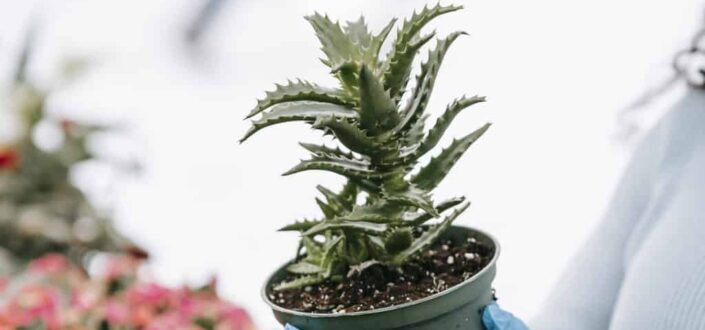
via: Pexels / Uriel Mont
Aloe plants can be spiky, spotty, dapple, and dramatic in texture and color. They'll surprise you with their blooms, which form on a very long stalk if the conditions are right. Physical characteristics such as leaf form, color, and flowering season can be used to identify your plant.
Downloadable and Printable List of Types of Aloe
Here is a downloadable and printable jpg/pdf list of types of aloe (right-click the image and select Save Image As...):

via: The Golden
Frequently Asked Questions

via: Pexels / Los Muertos Crew
While choosing the best succulent plants for yourself can be fun, knowing how to grow and care for your aloe is essential. Learning as much as you can about them is the best way to keep your plant happy and lively for years.
What is the difference between agave and aloe?
Agave is a close twin of aloe, so to confirm the identification of your plant, you can do the snap test, see what's inside the leaf, and check if it's aloe gel. Aloe will be full of slimy, water-like tissue, whereas agave is sinewy.
Is Aloe vera expensive?
Depending on the size and where you are buying them from, the cost of these aloes varies. A small five-inch pot can cost about $5. If you have a friend that loves gardening though, likely they'll have an aloe vera plant. Why not consider kindly asking for an aloe vera pup?
What is an aloe pup?
In a way, the genus aloe plant reproduces and creates offsets which are known as pups. You will notice miniature offsprings forming at the base, and when they reach about four inches, you can start separating them from the original aloe. These pups then become a plant on their own.
Is the Aloe plant poisonous to dogs and cats?
Saponin is the active ingredient in the aloe plant. It's a group of molecules that bind to sugar, and if ingested by animals, can cause excessive vomiting, severe diarrhea, and low blood sugar. They are considered to have a mild to moderate level of toxicity for cats and dogs. However, the toxicity can be extreme as to cause the breakdown of red blood cells, which can be fatal if not treated immediately.
How To Grow And Take Care Of Your Aloe Plant
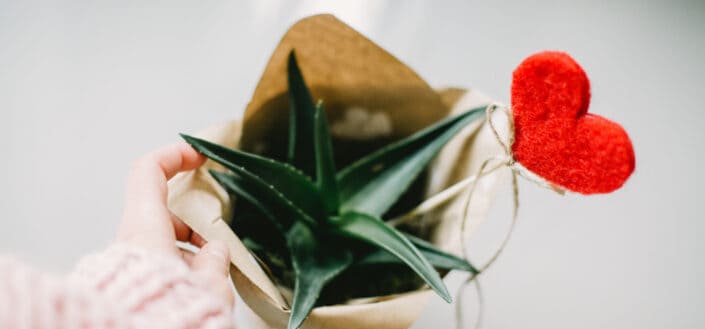
via: Pexels / Daria Shevtsova
Aloes will improve the appearance of your garden and home without taking too much of your time and attention. As aloes are like cacti in that they do best in dry conditions, the crux of your plant's survival is not to overwater them.
>
1. Choose the right soil
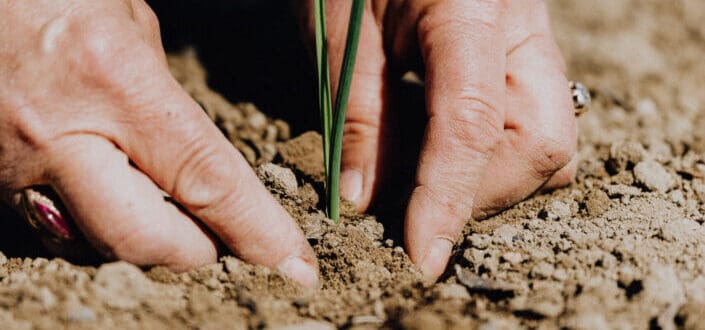
via: Pexels / Karolina Grabowska
When planting your aloe, I recommend using cactus soil mix which enhances drainage and increases evaporation. This provides your plant the dry conditions it favors. You can use fertilizer, but it generally doesn't need it. Aloe plants don't tolerate standing water.
2. Aloes need the right planter

via: Unsplash / Virgil Cayasa
Go for a planter or pot that is wide and fairly deep. Make sure it has drainage holes at the bottom. If you plant to grow your aloe in the garden, research what does well for the climate and seasons you have. If you experience heavy and consistent rainfall or snow, opt to keep your plants in a pot instead so that you can bring them indoors if the weather starts to threaten them.
3. Give them sunlight, plenty of it
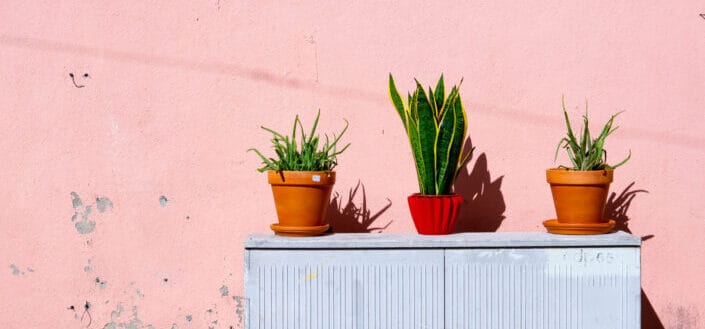
via: Pexels / Elle Hughes
This really depends on your plant, but aloes do love bright lights, whether it's in direct sunlight or artificial light. Some do better if they get full sunshine at least six hours per day. Aloes that don't get enough light often grow having excessively long and straggly stems.
4. Feed them the right amount
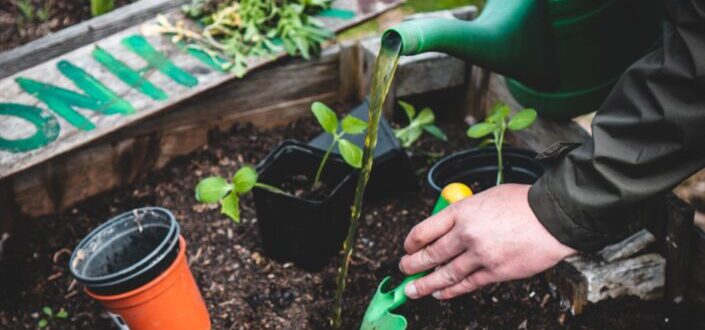
via: Unsplash / Jonathan Kemper
The most common reason an aloe plant will die is from overwatering. Remember, when growing aloe, let its soil completely dry out before giving it a thorough drenching. Water them deeply, but infrequently.
More Awesome Types of Plants
You've been exposed to everything you need to know about aloe, but perhaps your green thumb is still itching for more. Don't worry; we've got you covered.
- Ferns are some of the oldest living plants on Earth and are great for adding a pop of green! Here are some different types of ferns you can choose from.
- Orchids are a diverse group of flowering plants, there are many types of orchids available in a range of colors and sizes. Beautiful as home décor or an excellent accent to your garden.
- Jade Plants are uncomplicated to look after, many people love having types of jade plants for their offices and homes for symbolizing good luck.
In Conclusion
With all the types of aloe available, it's no wonder why they make such great additions as indoor decorations and showpieces in your gardens. When choosing between different types of house plants, aloe is a definite go-to.
Even for lazy gardeners, their longevity is all about ensuring they get the right amount of water and are placed where the sunlight reaches. It's that's simple.
So give aloe a try if you haven't already!


